I am currently teaching a graduate level Grassland Ecology course through Clemson University Forestry and Environmental Conservation online program. Graduate level courses can be rewarding for both students and instructors. Traditional exams can be difficult and time consuming to create and grade for instructors, and can be taxing for students to memorize unnecessary information. In search of an alternative, I came across using creative assignments to assess student learning and decided to give it a shot.
In lieu of traditional exams, I allowed students to consolidate course material learned using creative “not exams”. Creativity is often not built into course assignments, but is a highly valued skill, especially outside of the classroom. I allowed students to be creative in development of their “not exam”, by allowing almost any shape, form, or fashion of material to be presented, as long as it consisted of, surrounded, or encapsulated topics covered throughout the course. Examples of these “not exams” could include songs, comics, posters, story maps, blogs, influencer style short videos (e.g., tik tok), poems, art, infographics, games, short stories, series of memes, podcast, interview, grant proposal, or endless other things. I encouraged students to think creatively and draw on their interests and talents. It is truly amazing what people are capable of when you allow them some level of freedom. Below I list the 10 students with their assignments; please check out all ten!
- Wendy Buchanan created an educational puzzle based on mosaic grasslands in the Carolinas, targeted at providing a learning experience for youth campers, with the goal of donating it for learning. Here’s a youtube video of Wendy demonstrating the puzzle.
- Julie Grinstead created a StoryMap highlighting Purple Moor-Grass Molinia caerulea.
- Travis Hobbs recorded a podcast episode on the “History of Bison and Grasslands in Indiana”.
- Brett Jenkinson conducted a brief survey of dominant species in a grassland-type ecosystem, and compiled the information into a StoryMap.
- Dan Peeples created a narrated video recorded at a grassland in South Carolina.
- Madison Subtil created a StoryMap that summarizing information that we covered in class on grassland ecosystems with a few memes to keep it fun.
- Kate Noonan created a thematic collage highlighting biodiversity of grasslands, including phrases and images from selected National Geographic books and magazines from 1964-2017, and several hand drawn pencil sketches.
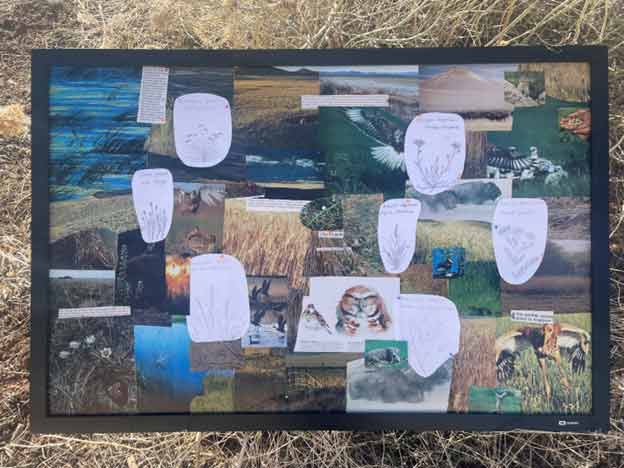
8. Richard Land created a series of memes regarding topics covered in the course.
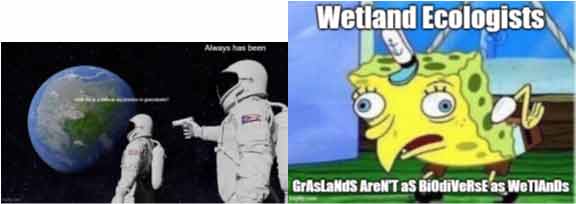
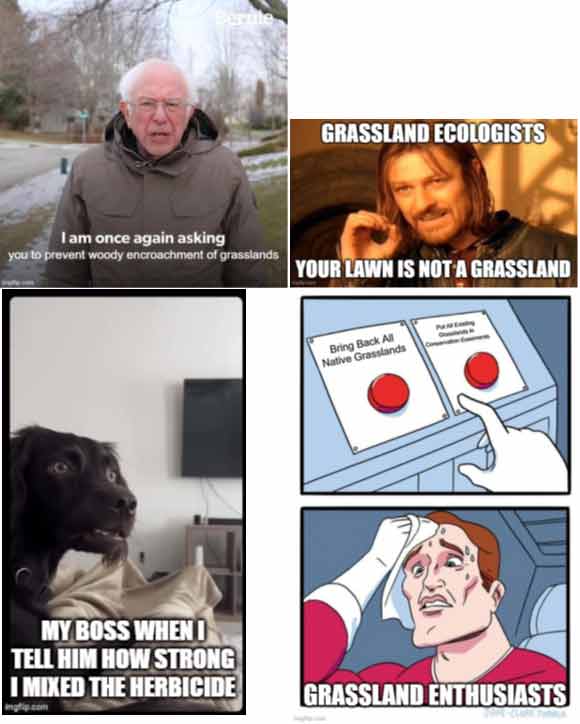
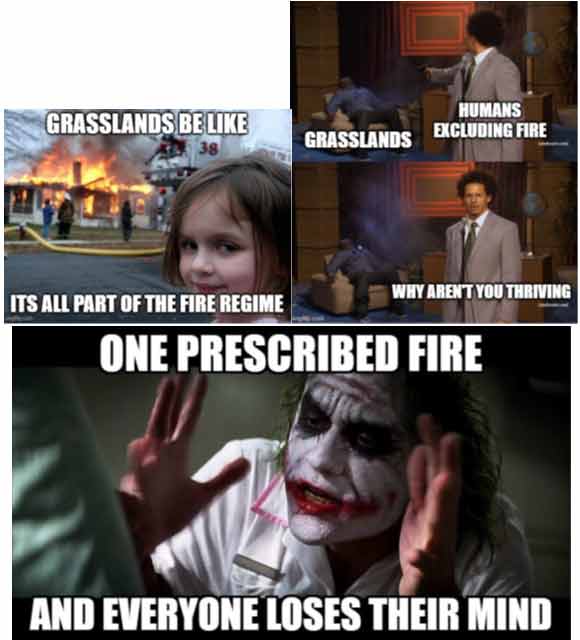
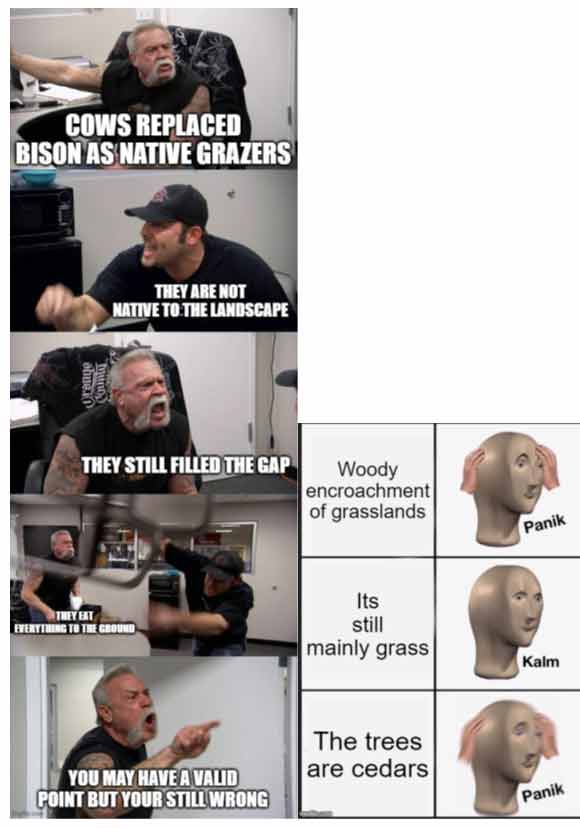
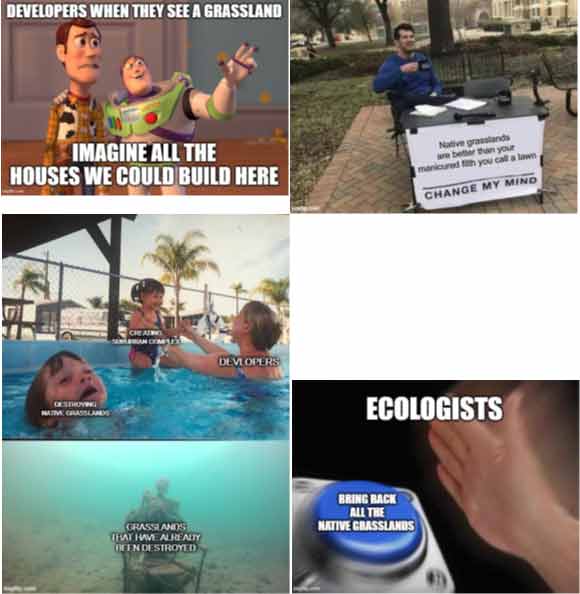
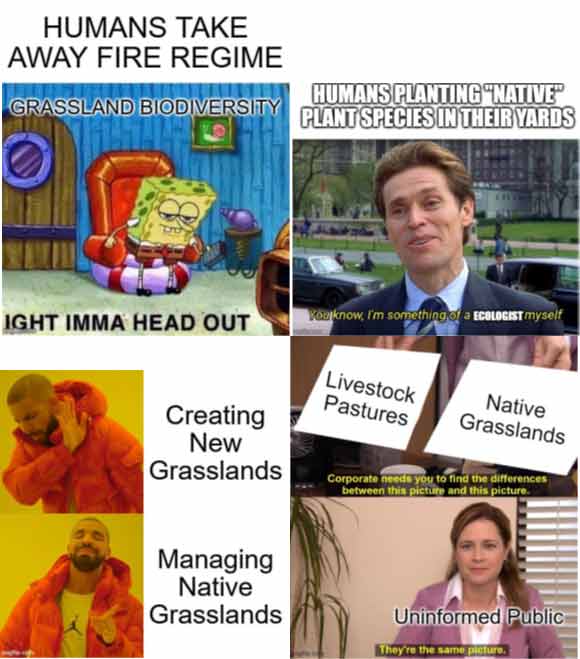
9. Candice Moreau created a hand drawn and colored depiction of the forgotten grasslands of North Carolina, highlighting rare, endangered, and endemic species within each location scene. Below are quotes of Candice’s description.
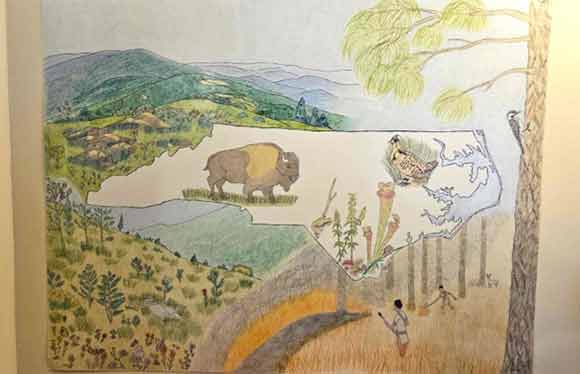
“Featured within the NC border is a bison and a Heath Hen. The last wild bison in North Carolina was shot in western North Carolina in 1799 near Bull Creek. Also featured is the extinct Heath Hen (Tympanuchus cupido cupido), a former subspecies of the Greater Prairie Chicken (Tympanuchus cupido), which went extinct in 1932 when the remaining few died out on Martha’s Vineyard. Also, within the border is a microscene from a currently-existing Green Swamp Preserve in the Big Island Savannah. Grassland ecosystems are incredibly important for wetland species as well. Within the sandhills, in the borders between savannah and woodland, one can find rare and endmeic plants such as the yellow pitcher plant (Sarracenia flava), the federally endangered poconsin loosestrife (Lysimachia asperulifolia), and the Venus flytrap (Dionaea muscipula). The Pine Barren’s treefrog (Dryophytes andersonii) is uncommon and declining in North Carolina.”
“Starting in the lower right, a scene of a longleaf pine savannah with associated disturbances, fire and grazing. The eastern half of North Carolina was historically longleaf pine savannah, with distinctions between bluestem and wiregrass associations. The detailed tree is a longleaf pine with our friend, the Red-cockaded Woodpecker.”
“On the lower left is a scene from a remaining rare habitat type, a grassland ecosystem endemic to this single location. This is the Buck Creek Serpentine Barrens, an open woodland featuring a mix of at least two dozen grasses including little bluestem (Schizachyrium scoparium), big bluestem (Andropogon gerardi), and prairie dropseed (Sporobolus heterolepis). I knew drawing specific species of grass in quantity would be impossible for me, so instead I featured scarlet Indian paintbrush (Castilleja coccinea), largeleaf grass-of-parnassus (Parnassia grandifolia), the endemic specifically to this site, the Buck Creek ragwort (Packera serpenticola) and Rhiannon’s aster (Symphyotrichum rhiannon). Butterflies include the Cullasaja aphrodite fritillary (Speyeria aphrodite cullacaja), the Appalachian crescent (Phyciodes batesii maconensis), the dusky azure (Celastrina nigra), and the gorgone checkerspot (Chlosyne gorgone). Stunted, sparse trees in these open area include Virginia pine (Pinus virginiana) and pitch pine (Pinus rigida).”
“The top left is a scene of the Roan Highlands, the longest stretch of grassy balds in the Appalachians. This endangered ecosystem is at risk due to woody encroachment of surrounding spruce-fir forests, primarily due to lack of disturbance maintaining the balds. Because of the high elevation and frequent low fog, the Roan ecosystem is likely not adapted to frequent fires enough to manage the grasslands, but rather it was the presence of grazing animals that used to maintain it. It is hypothesized that grazing Pleistocene megafauna maintained the balds, and were eventually replaced by herds of eastern elk (Cervus canadensis canadensis) and plains bison (Bison bison bison). The scene features Gray’s lily (Lilium grayi), endemic to the southern Appalachians, and the endangered Roan Moutain bluet (Houstonia purpurea var. montana), as well as the threatened Golden-winged Warbler (Vermivora chrysoptera). Catawba rhododendron (Rhododendron catawbiense) in the background.”
10. Marisa Zimmerman wrote “an Educational Grassland Poem” based on class readings.
What is a grassland? Not everyone can agree.
Though there can sometimes be waves, and the occasional tree.
It is not a forest, a desert, a wetland, or even a sea.
But if it’s none of those things, what could it be?
(Gibson Ch. 1)
A grassland is mostly grasses, that much we know.
There can be forbs and legumes and other plants that sow.
It can be a pasture, a steppe, a prairie, or meadow,
But it is not a place where many woody plants grow.
(Gibson Ch. 1)
When you picture a grassland, what’s your first thought?
The “Great Plains” in the U.S. is the typical spot.
The Southeast has grasslands too, you may have forgot.
There’re prairies, savannahs, glades, balds, and canebrakes throughout!
(Noss Ch. 1)
Where did grasslands come from? How’d they get here?
It’s mostly secondary, man-made, grasslands that persevere.
When the Eocene ended, drier climates appear,
As did primary grassland in the North and South hemisphere.
(Bredenkamp et al. 2002)
They cover much of the planet, but grasslands are threatened.
Fragmentation, invasives, and conversion upend.
Climate change has also not been a friend.
Many grassland species are on the down trend.
(Gibson Ch. 1)
Biodiversity is needed for grassland might,
Root trait variability helps keep soils tight.
Plant diversity is needed to keep away fright.
With multiple species, the future is bright!
(Gould et al. 2016)
To a plant, Nitrogen is quite seductive.
For Nitrogen fixation, plant diversity can be constructive.
We want our grasslands to be productive.
To this, homogeneity is gravely destructive.
(Tilman et al. 1996)
Farming practices might soon hit a wall,
As monoculture is the current bell of the ball.
Though diversity increases temporal stability overall.
Within a single species, abundance might fall.
(Tilman et al. 2006)
Biodiversity can come on many of scale,
Diverse genes, species, communities, and landscapes are needed for a smooth sail.
While overgrazing can cause heterogeneity to fail,
Some sustainable grazing is needed for a happy tale.
(West 1993)
Tallgrass prairie enjoy Bison that graze,
Here, they are the keystone species that trailblaze.
Mixed-grass prairie partially rejoice in this craze,
But here livestock we can also raise.
(McMillan et al. 2018)
At first it might not make any sense,
A happy grassland requires some disturbance.
When intrinsic is hindered, foliage can get too dense,
Then sustainable grazing and fire management we must dispense.
(Wilsey Ch. 3)
Disturbance is what many migrating birds too desire,
Shorebirds prefer grasslands that have been burned by fire.
For golden-plover, killdeer, and sandpiper, this is dire.
Without stopover habitat they will tire.
(Hovick et al. 2017)
Timing of fire is important too,
Just look at what Henslow’s sparrow do.
After a fire they prefer larger grasslands, its true,
For the next two years, to smaller grasslands they skew.
(Keating et al. 2023)
Conservation policy must happen now.
But if not all can agree and some are forgotten, then how?
Geographical mapping advancing technology has made a vow,
To classify grasslands so that future policy, allow.
(Dixon et al. 2014)




